Most software and games load instantly with an SSD. Copying, moving and deleting files will be on average 4 times faster than with an HDD. For more performance, you can replace your current hard drive with an internal SSD. Find what you need with our comparison guide.
Here is our commitment, to make sure that we provide the best user experience and content quality:
You can support us by using our links to make your purchases (at no extra cost to you)! This sometimes earns us a commission which allows us to remain independent. More about us
Our selection
"With a capacity of over 1,000 GB, the Samsung 970 EVO Plus 1 TB should help speed up the execution of programs on your computer.…"
"The WD Blue NAND 3D M2 SATA offers NVMe-class performance at prices equivalent to SATA hard drives. As a cheap internal SSD, this one is…"
"The Sabrent Rocket M2 NVMe is the ultimate internal SSD. It's fast, efficient and durable. Plus, it looks great and offers 2TB of storage. But…"
"Compared to its predecessor, the Samsung 860 Evo brings significant improvements, especially in speed and endurance. The price also remains low."

With a capacity of over 1,000 GB, the Samsung 970 EVO Plus 1 TB should help speed up the execution of programs on your computer. An excellent choice for standard use.
See the priceSamsung has equipped this SSD with V5 flash, which offers a nice increase in data throughput, up to 3.5 Gbps in sequential reads. The drive also boasts hardware encryption support, a 5-year warranty and endurance of up to 1,200 TBW. Overall, the Samsung 970 EVO Plus 1TB is one of the fastest internal SSDs on the market.
This model offers the same advanced thermal control features as the 970 EVO. Samsung also added a nickel coating on the Phoenix controller and a thin copper film on the back of the PCB to help dissipate heat efficiently. Samsung's Dynamic Thermal Guard, a thermal limiting algorithm, will automatically slow performance if it detects the drive is getting too hot.
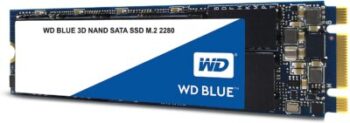
The WD Blue NAND 3D M2 SATA offers NVMe-class performance at prices equivalent to SATA hard drives. As a cheap internal SSD, this one is a must have.
44,85 £ on RakutenThe M2 version of the Western Digital Blue NAND 3D is perfect for upgrading computers with an M2 slot. Right away, it's worth noting that the WB Blue NAND 3D M2 SATA comes with a 3-year warranty and has an endurance of 200 TBW. This means that WD expects you to be able to write 200 terabytes to the drive before experiencing capacity loss due to cell wear!
The performance is surprisingly good for an entry-level internal SSD drive. We test SSDs using both virtual benchmarks, primarily AS SSD and CrystalDiskMark, and real file copy tests. Incidentally, this drive easily hits the limits of M2 SATA ports, 540 MB/s sequential read and 97,000 IOPS random read. For read speeds, this model has a maximum sequential speed of 500 MB/s and a maximum random speed of 79,000 IOPS.
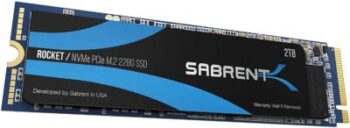
The Sabrent Rocket M2 NVMe is the ultimate internal SSD. It's fast, efficient and durable. Plus, it looks great and offers 2TB of storage. But to get it, you'll have to pay the price.
See priceThe Sabrent Rocket M2 NVMe 2TB has a copper label, which helps cool this internal SSD. At the heart of the SSD is the Phison PS5016-E16 PCIe 4.0 x4 NVMe 1.3 SSD controller. Built on a 28nm process node and featuring 2 Cortex R5 processor cores with 2 coprocessors (called CoXProcessor 2.0), the overall design is similar to Phison's E12. This 2TB model includes 2 SK Hynix 1GB chips for the FTL table mapping task.
Good to know, this internal SSD supports thermal monitoring, TRIM and NVMe Format control to safely erase data. In addition, it has end-to-end data protection to ensure data security and power management support for better efficiency.
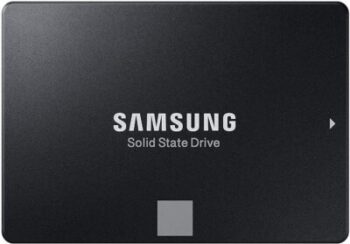
Compared to its predecessor, the Samsung 860 Evo brings significant improvements, especially in speed and endurance. The price also remains low.
196 £ on CdiscountIn terms of pure performance, the Samsung 860 Evo achieves 560 MB/s in sequential read and 520 MB/s in sequential write. Compared to its predecessor, the 850 EVO, there are improvements of 5 to 20 MB/s in sequential speeds and 60 to 70 MB/s in random speeds.
The improvements are also noticeable in endurance. With Total Bytes Written, for example, a software that allows to have a precise idea of the life of a hard disk, the 850 Evo had a TBW of 300, while the 860 Evo displays a huge TBW of 1 200. The latter is thus 4 times more enduring than its elder.
Any specific needs?
The best entry-level internal SSD
The best high-end internal SSD
The best 2.5" SATA internal SSD
Your guide :
Rate this buying guide :By rating this buying guide, you are helping us to reward our best writers. Thank you!
| TOP OF THE TOP | CHEAP | TOP OF THE LINE | EXCELLENT | |

In accordance with our commitment, this buying guide does not contain any sponsored products. |
 9/10 |
 7/10 |
 7/10 |
 7/10 |
| OUR SELECTION |
Samsung 970 EVO Plus 1 To
|
WD Blue NAND 3D M2 SATA 500 Go
|
Sabrent Rocket M2 NVMe 2 To
|
Internal SSD - Samsung 860 EVO SATA
|
|
With a capacity of over 1,000 GB, the Samsung 970 EVO Plus 1 TB should help speed up the execution of programs on your computer. An excellent choice for standard use.
|
The WD Blue NAND 3D M2 SATA offers NVMe-class performance at prices equivalent to SATA hard drives. As a cheap internal SSD, this one is a must have.
|
The Sabrent Rocket M2 NVMe is the ultimate internal SSD. It's fast, efficient and durable. Plus, it looks great and offers 2TB of storage. But to get it, you'll have to pay the price.
|
Compared to its predecessor, the Samsung 860 Evo brings significant improvements, especially in speed and endurance. The price also remains low.
|
|
|
Storage capacity
|
1 T0
|
500 GB
|
2 TB
|
2 TB
|
|
Hardware interface
|
PCIe 3.0 x4 / NVMe 1.3
|
SATA 6.0 Gb/s
|
PCIe 3.0 x4 / NVMe 1.3
|
SATA 6.0 Gb/s
|
|
Random read and write
|
600,000 IOPS - 550,000 IOPS
|
97,000 IOPS - 79,000 IOPS
|
750,000 IOPS - 750,000 IOPS
|
98,000 IOPS - 90,000 IOPS
|
|
Sequential read and write
|
3,500 MB/s - 3,300 MB / s
|
540 MB/s - 500 MB/s
|
5000 MB/s - 4400 MB/s
|
520 MB/s - 500 MB/s
|
|
Endurance
|
600 TBW
|
200 TBW
|
3,600 TBW
|
1,200 TBW
|
Help us improve this table:
Report an error, request the addition of a feature to the table, or suggest another product. Thank you for your kindness!
We spend thousands of hours each year studying the major specialized websites, analyzing products of hundreds of brands and reading user feedback to advise you on the best products.
We are a product review company with a single mission: to simplify your buying decisions. Our research and testing helps millions of people every year find the best products for their personal needs and budget.
To support us you can: use our links to make your purchases (which often earns us a small commission), share our articles on social networks, or recommend our site on your blog. Thanks in advance for your support!
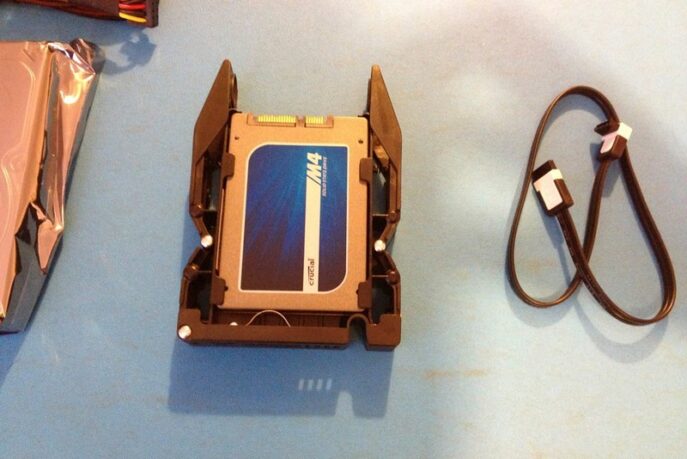
When you purchase an internal SSD for your computer, you can use your SSD for the operating system and applications. The HDD will be used to store your data. A 40GB SSD will be enough to run your PC on a Windows or MAC operating system with some essential software. But if you can afford an 80GB SSD, it will be even better. On the other hand, it is quite possible to use an SSD for both the operating system and data storage. Of course, you will need a larger SSD of at least 500GB. On the market, there are even 1TB, 2TB, and 4TB SSDs.
Manufacturers specify SSD performance based on sequential read and write speeds, which typically go up to 500MB/s on reads and a little lower on writes. As a rule of thumb, about 50% of read/write operations will be sequential for a real user. Random write speed and random read speed are another benchmark for measuring the performance of an internal SSD. Random read/write tests work with small blocks at random locations on the disk. As a rule of thumb, about 25% of read-write operations will be random for a real user.
The mean time between failures or MTBF is the manufacturer's estimate of the total number of hours the product has been operating divided by the number of failed sectors. A long MTBF is always a useful indication but does not guarantee that the product will last that long. The reliability of internal SSDs is on the order of a few million hours.
TRIM
is a command that allows an operating system to tell an SSD which blocks of data are no longer considered functional and therefore can be deleted. TRIM support helps maintain SSD performance at all times by cleaning up deleted files. This background memory cleanup process reduces latency and improves disk performance.
Most SSDs come with built-in SATA support. Transfer speed may vary between SATA versions. Newer SSDs support up to SATA III which offers a transfer speed of 6 Gbps. SATA II is capable of transferring up to 3 Gbps. And SATA I is limited to 1.5 Gbps. Find out the data transfer rate of your SSD before you buy.
An SSD metric called terabytes written (TBW) refers to the point at which, after a certain amount of data is written to the drive, the drive's cells begin to fail, meaning that the available space on the drive will decrease. The TBW rating of a drive is typically between 100 and 3,500, depending on the manufacturer, capacity and use case. But for the most part, it's not a number that will affect everyday users.
That said, those who buy an SSD for business applications such as movie making, server hosting, will want to choose an internal SSD drive that can withstand large file transfers per day for months or even years.
TBW is also used as a basis by manufacturers to determine the warranty period of an SSD drive, which will almost always be three to five years or until you reach the TBW benchmark. Manufacturers have ways of reading a drive to determine how many terabytes have been written to it, so make sure you haven't already exceeded your TBW before making a claim on your warranty.
When it comes to internal SSDs, the underlying technology has advanced significantly over the years in terms of performance and form factor. Now, an SSD can be classified into 4 form factors. The form factor describes the physical attributes of a device or hardware component, such as its weight, size and other similar attributes.
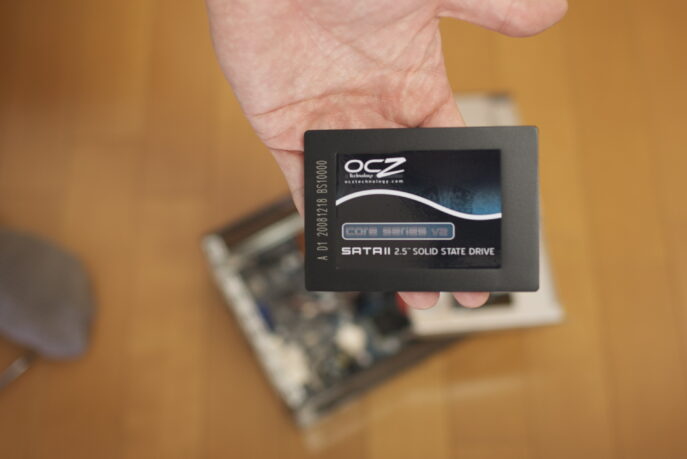
The 2.5-inch form factor is reminiscent of the HDDs found in most PCs. The 2.5-inch designation indicates the size of the drive. This is a commonly used SSD form factor, especially in machines with a drive bay and connecting via the SATA (Serial Advanced Technology Attachment) interface. Since many custom versions already use the 2.5-inch drive, the availability of an equivalent SSD simplifies the transition to a faster driver without requiring additional hardware. Thus, the 2.5-inch form factor is the preferred choice for SSDs.

M
.2, formerly NGFF (New Generation Form Factor), replaces the mSATA standard. It is a relatively new specification for internal SSDs. The module resembles RAM and is often installed in a majority of laptops. It is also increasingly adopted by various PC motherboard manufacturers. M.2 SSDs are available in different sizes. In general, you can find an M.2 SSD with either a SATA or PCIe interface.
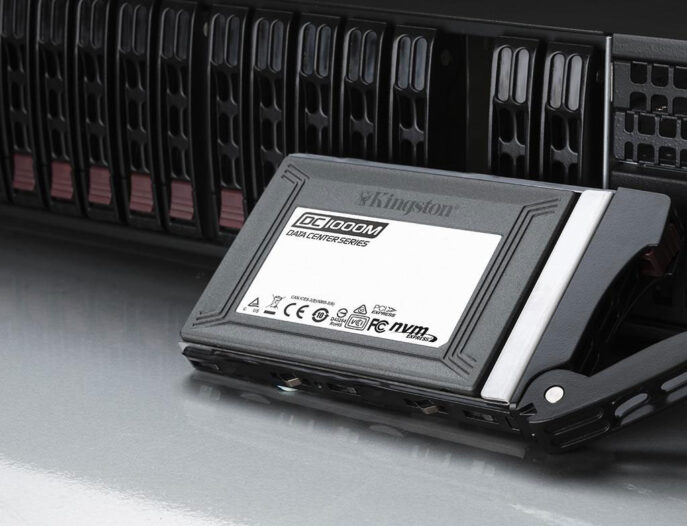
At
first glance, U.2 SSDs look somewhat identical to SATA HDDs. They are comparatively larger than M.2 SSDs, so they offer more capacity and better heat dissipation. As far as the connection type is concerned, U.2 SSDs use the PCIe interface to establish the connection with the motherboard. However, it requires a separate connector, similar to the SATA Express socket, if you want to connect it to an M.2 port. One of the advantages of U.2 over M.2 is that it supports hot swapping; this means you can remove or insert the SSD while the computer is running, without having to shut down or restart it.
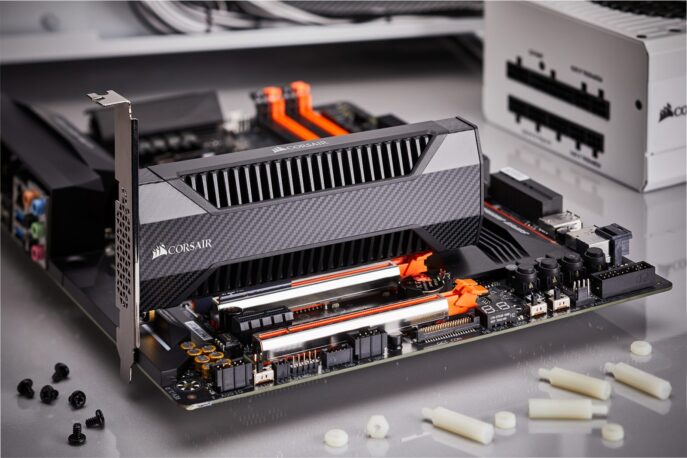
An
expansion card (AIC), as the name implies, is a form factor that offers the ability to plug an SSD into a machine as an expansion. This configuration offers more compatibility and flexibility. It relies on the PCIe expansion slot for connection, which also provides an advantage. For those who have an older machine with a relatively old motherboard, it will likely not have a modern M.2 interface. Thus, the expansion card form factor (AIC) makes it easier to upgrade a machine with a faster storage component.
SATA (Serial ATA) is a type of connection interface used by SSDs to communicate data with your operating system. It was created in 2003, which means that it has had a long time to solidify itself as one of the most widely used connection types today.
SATA SSDs have better hardware compatibility. If you buy a SATA SSD, it is almost guaranteed to work with any desktop or laptop computer you currently own, even if that computer is over ten years old.
SATA SSDs have a fairly low relative performance. At the time of writing, SATA 3.0 is the most common form of SSD, which has a theoretical transfer speed of 6 Gbps. But due to physical overhead that occurs when encoding data for transfer, it actually has a practical transfer speed of 4.8 Gbps. While that's fast, it's still nowhere near the transfer speeds offered by PCIe SSDs.
Finally, SATA SSDs tend to be cheaper. This is probably the most important point for most home users. The truth is that the price difference between SATA and PCIe SSDs is significant, almost as significant as the price difference between SSDs and HDDs.
You can think of PCIe (Peripheral Component Interconnect Express) as the most direct connection to the motherboard. It's typically used with devices like graphics cards, which also require extremely fast data connections, but PCIe has also proven useful for data storage drives, like SSDs.
PCIe 3.0 has an effective transfer speed of 985MB/s per lane, and since PCIe devices can support 1, 4, 8 or 16 lanes, you get potential transfer speeds of up to 15.76GB/s. But does that mean that a PCIe SSD with 16 lanes is 25 times faster than a SATA SSD? Theoretically, yes, but you won't find consumer SSDs with that many lanes. Usually you'll have a choice of 2 or 4 lanes, which means an effective transfer speed of around 3.94 GB/s.
On the other hand, PCIe SSDs tend to use a lot of power. If you're just browsing the web, working in Google Docs, checking email, or doing something that doesn't put a lot of strain on the CPU and RAM, you won't notice much difference between SATA and PCIe SSDs. These activities don't involve a lot of data transfer. But if you're constantly reading and transferring data, PCIe SSDs will use more power and drain your laptop battery faster.
In short, if you're on a tight budget, go for a SATA SSD. If you need maximum performance for frequent file transfers, go for a PCIe SSD. Both SATA and PCIe SSDs are clearly better than HDDs in terms of speed, so you really can't go wrong either way.
More durable
With HDDs, the continuous movement generated by small moving parts creates heat, which is a major factor in hard drive failure. Because SSDs have no moving parts, they are more reliable and shock resistant than HDDs.
Faster
The lack of moving parts also allows SSDs to be faster and more responsive. The best internal SSDs offer instant loading performance, which means faster boot times for your operating system, faster loading times for software, and better overall system responsiveness.
Much quieter
The absence of mechanical parts makes an SDS completely silent during operation. Zero noise is impossible on a hard drive. The rotation of the metal platter and the back and forth movement of the drive arm creates noise and even subtle vibrations.
Consumes less energy
We can't stress this enough, an SSD has no moving parts. Therefore, it doesn't require any mechanical work to become operational, which significantly reduces its power consumption. This means that an SSD is suitable for energy-efficient computers and consumer electronics. In addition, using an SSD reduces a computer or device's vulnerability to overheating.
Update the SSD firmware
To ensure that your internal SSD is working optimally, you should always watch for firmware updates. Usually, the installation of these is not automated. Each SSD manufacturer has its own method for SSD firmware upgrades, so you'll need to go to your SSD manufacturers' official websites and follow the steps listed. You can also use software like CrystalDiskInfo, which displays detailed information about your SSD, including the firmware version.
Disable indexing in Windows
When
your internal SSD is connected to your PC, always disable indexing. Much of your SSD's speed is consumed in indexing files for Windows search. This can be useful if you store everything you have on your SSD, but it could annoy you if you experience slowdowns due to the periodic indexing process that occurs every time you add new data to the drive.
Disable Prefetch and Superfetch on Windows
Windows
sometimes places information in your physical memory and virtual memory belonging to programs that you don't currently use but use very often. This is called Prefetch and Superfetch. If you have to manage virtual memory on your SSD, you'd better get rid of these two features. You can find them on your registry editor under "HKEY_LOCAL_MACHINE Current ControlSet Control Session Manager Memory Management PrefetchParameters" and as 2 values: EnablePrefetcher and EnableSuperfetch. Set both values to zero to disable.
Configure write caching
On
many internal SSDs, user-level write caching can have a detrimental effect on the disk. To understand this, you'll need to disable the option in Windows and see how the drive performs afterwards. If your drive performs worse, turn it back on.
Set the power option to "High Performance".
This
should be a no-brainer. When your SSD turns on and off all the time, you'll notice a slight lag every time you use your computer after it's been idle for a while. To change your power options, go to your control panel, click on "System and Security" and then "Power Options". Select "High Performance" from the list. You may need to click on "Other Additional Options" to find it. On a laptop, you can click on the battery icon in your notification area and select "High Performance" from there.
The best internal SSD depends on your needs and your budget. Read our buying guide to find out which products are the best.
Disconnect all other hard drives or SSDs. Start the Windows 7 installation disk. Choose repair, then advanced, then command prompt. Type: "diskpart" without quotes and press Enter. You will see a command called "diskpart". Type the following commands and press Enter after each one.
, restart the computer on the Windows 7 installation disk.
You can, but you must first disable the drive security on the original computer. Then you can re-enable it on the new computer.
The technology used in SSDs is more advanced and newer, while HDDs have been around for over half a century now. For almost a decade, the price gap between SSDs and HDDs has been narrowing. But an SSD is still more expensive than an HDD and it will remain so.
The hard drive is made up of magnetic platters that rotate to make it work. This technology has been used since the mid-1950s. Because of the moving parts, hard drives sometimes fail due to mechanical problems, heat, shock, cold and vibration. In the case of the SSD, there are no moving parts, but memory chips; the same ones found in USB flash drives and other compact flash storage devices available on the market. They are less prone to damage from shocks and the vagaries of nature.
Every month we help more than 1 000 000 people buy better and smarter.
Copyright © 2022 - Made with ♥ by buyingbetter.co.uk
Your reviews and buying guides 0% advertising, 100% independent!